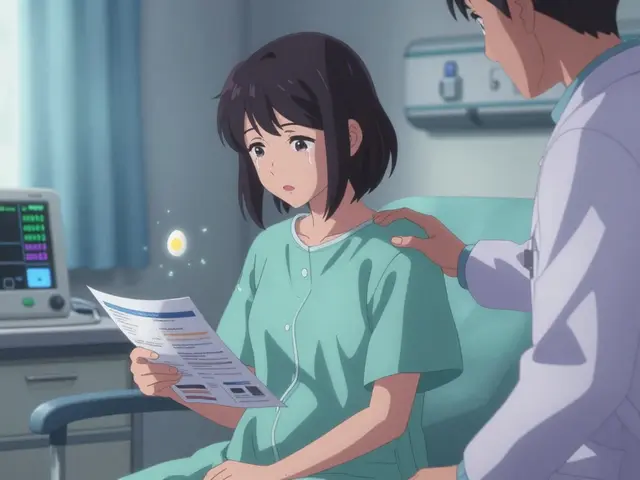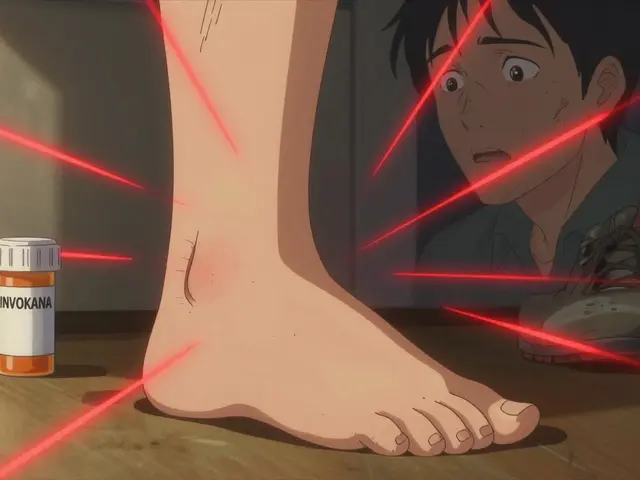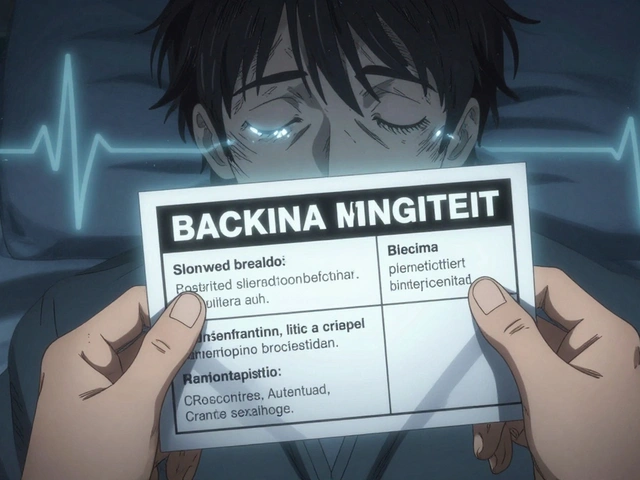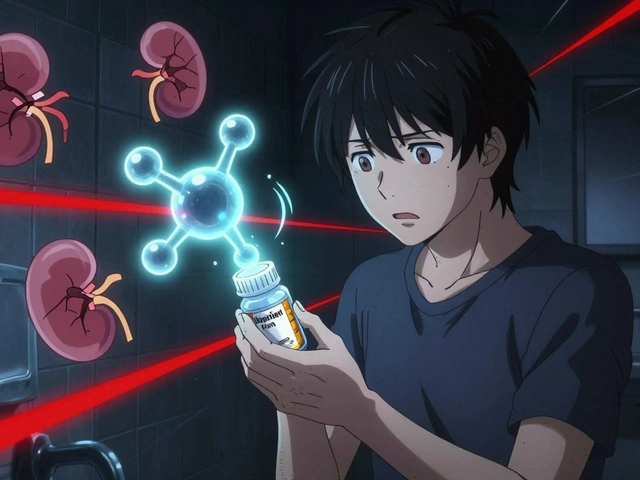Lung inflammation in kids might sound scary, but it's a reality many parents face. The earlier you catch it, the better the outcome for your little one. If you've ever dealt with a child who's suddenly having trouble breathing or coughing more than usual, you know how unsettling it can be.
So, what's going on exactly? Well, lung inflammation, or pneumonitis, means the air sacs in the lungs are irritated. This can lead to problems with breathing and general discomfort. It could stem from infections, allergens, or even exposure to certain chemicals. Kids might be more prone if they have asthma or allergies. Knowing these potential culprits can help in managing the condition effectively.
- Understanding Lung Inflammation
- Causes in Children
- Recognizing Symptoms
- Treatment Options
- Prevention Tips
- When to Seek Help
Understanding Lung Inflammation
Lung inflammation, also known as pneumonitis, is a condition where the lung tissues become irritated and swollen. This inflammation can make breathing a challenge, especially for kids whose respiratory systems are still developing. Lung inflammation in children can be a red flag for various health issues.
Many things can trigger this condition. Infections, like those caused by viruses or bacteria, are common culprits. Allergens, such as pollen or pet dander, can also cause lungs to become inflamed. Long-term exposure to pollutants or even certain medications might contribute as well. It's like when you inhale smoke at a barbecue; your lungs might feel irked, but for children, the impact can be more intense.
"Understanding the root causes of lung inflammation is crucial for effective treatment," says Dr. Emily Chen, a leading pediatric pulmonologist. "Acting early can prevent more severe respiratory issues later."
When it comes to treatment, understanding what’s happening inside your child’s lungs is key. Imagine trying to address a leaky faucet without knowing which part is broken—it wouldn’t be very effective, right? Similarly, knowing the specific cause of the inflammation guides us to the right remedy.
Causes in Children
Understanding the root causes of lung inflammation in children can help parents respond swiftly and effectively. Various factors can trigger inflammation in young lungs, and it's vital to identify them to prevent flare-ups and serious issues.
Infections
Infections, particularly viral ones, are the most common culprits. Think of conditions like the flu or respiratory syncytial virus (RSV). These pesky invaders can cause a child's immune system to go into overdrive, leading to inflammation in the airways.
Allergens
Kids are often up close and personal with potential allergens—from pollen to pet dander. If your child has allergies, these common elements can cause the lungs to become inflamed as the body tries to fight off what it perceives as harmful.
Environmental Factors
Sometimes, the environment plays a big role. Exposure to smoke from cigarettes or pollution can irritate young lungs. It's not just about outdoor air; indoor air pollutants like mold play their part too.
Pre-existing Conditions
Children with asthma or similar respiratory conditions are more prone to lung inflammation. Their lungs are already sensitive, so any additional irritant can trigger inflammation.
Chemical Exposure
Certain chemicals, whether household cleaning products or secondhand smoke, can irritate a child's respiratory tract. It's wise to keep such materials out of reach and minimize their use around children.
Statistics
Recent studies show that approximately 20% of pediatric respiratory issues are related to allergic triggers, emphasizing the need for awareness around allergens in everyday life.
| Cause | Percentage of Cases |
|---|---|
| Infections | 55% |
| Allergens | 20% |
| Environmental Factors | 15% |
| Pre-existing Conditions | 7% |
| Chemical Exposure | 3% |
By knowing these causes, you're in a better position to safeguard your child's health. Regular checks with a healthcare provider can also be beneficial in managing these risks efficiently.
Recognizing Symptoms
Spotting lung inflammation in children might seem tricky, but knowing the signs can make all the difference. Let's dive into what to look for, so you can catch it early.
Watch Out for These Signals
The main thing to keep an eye on is your child's breathing. If they’re wheezing, coughing persistently, or seem more out of breath than usual, it could be a sign of lung inflammation. This might happen even when they’re just walking or playing.
Another telltale sign is if they're complaining about chest pain or feeling tired all the time. Fever could also come into play, often making them feel worse than just a normal cold. Some kids might not be able to voice how they're feeling, so staying observant is key.
Behavioral Changes
If your child seems grumpier than usual, not eating well, or doesn’t want to play, these changes can indicate something's up with their health. It’s not always about what they say but how they act.
Look for Red Flags
- Fast or labored breathing
- Pale or bluish skin, especially around the lips
- Persistent cough that doesn't improve
- Extreme fatigue
These red flags mean it might be time to see a doctor. Early detection helps avoid complications and speeds up recovery.
It’s worth noting that kids with asthma or allergies might show stronger symptoms during flare-ups. Keeping track of their symptoms with a journal can really help your doctor figure out what's going on.

Treatment Options
When it comes to tackling lung inflammation in children, there are a few straightforward routes you can take, depending on the source of the problem. Always remember, though, it’s crucial to consult with a healthcare professional for the best approach. However, knowing the basics can be a lifesaver.
Medications
Medications play a big role in treatment. Doctors might prescribe antibiotics if a bacterial infection causes inflammation. If allergies are the culprit, antihistamines or corticosteroids might help reduce the swelling in the lungs.
- Antibiotics: Only effective against bacterial infections. Unnecessary use can lead to resistance.
- Antihistamines: Great for allergy-related issues, helping calm the immune response.
- Corticosteroids: An anti-inflammatory that can be inhaled to directly target lung inflammation.
Natural Remedies
Some parents explore natural remedies. Warm mist humidifiers can ease breathing by adding moisture to the air, and propping up pillows might alleviate nighttime breathing troubles. Always ensure these methods are safe for your child before trying them out.
Rest and Hydration
Sometimes, the simplest advice is the best. Make sure your child is resting, as this helps the body focus on getting better. Plenty of fluids keep them hydrated, which is key when fighting inflammation. Warm liquids like soups or herbal teas can be soothing and offer some relief.
Preventive Measures
While treatment is vital, prevention is the key and often overlooked. Ensure your child isn’t exposed to smoke or allergens, and keep vaccinations like the flu shot up to date. A balanced diet and regular physical activity can also strengthen their immune system against potential threats.
Prevention Tips
Keeping your child safe from lung inflammation starts with basic preventive measures. These steps can go a long way in avoiding those risky flare-ups. Let's break it down:
Maintaining Good Hygiene
Regular hand-washing is a must. Kids love to play, and germs love to spread. Make hand-washing a fun routine before meals and after playing outside. You'd be surprised at how effective this simple step can be in keeping infections at bay.
Healthy Environment
Make your home as allergy-free as possible. This means regular cleaning, using air purifiers, and maybe even choosing hypoallergenic bedding. These steps minimize dust mites and pollen, common triggers for respiratory issues. Keep an eye out for mold, too—it doesn't stand a chance if you're vigilant.
Avoiding Exposure
Stay away from secondhand smoke, as it can trigger lung inflammation. If someone in your household smokes, making your home smoke-free can significantly reduce risks for your little one. Plus, it's a great move for everyone's health.
Boosting Immunity
Nutrition plays a key role in prevention. A diet rich in fruits, veggies, and whole grains can boost the immune system, making your child less susceptible to infections. Don’t forget the importance of a balanced diet in the long run.
Regular Check-ups
Don't skip those routine doctor visits. They can help catch potential issues early on, and your doctor can offer tailored advice if your child has asthma or allergies. It's always better to be proactive rather than reactive.
Prevention requires a bit of diligence but investing time in these steps can keep children healthier and free from lung inflammation.
When to Seek Help
Knowing when to call the doctor is key when dealing with lung inflammation in your child. It can be tricky to figure out if you should handle things at home or get a professional involved, but here are some signs you shouldn't ignore.
Watch for These Symptoms
If your child's breathing seems labored, they're breathing faster than normal, or you hear a wheezing sound, it's time to pay attention. These could mean the inflammation is getting worse. A high fever alongside these symptoms is another red flag.
Persistent coughing that doesn't go away, especially if it's producing spit or mucus, needs to be checked by a healthcare provider. And if your child looks unusually pale, or if their lips or fingernails appear bluish, get them seen to immediately.
Action Steps
- Monitor your child's breathing and any coughs they may have. Write down any changes or patterns you notice.
- If you suspect exposure to a trigger or allergen, try to remove it from their environment.
- Keep them hydrated — sometimes fluids can help ease symptoms.
If symptoms aren't improving with home care, or if they're worsening, call your child's healthcare provider. It's better to be safe and discuss persistent symptoms with a doctor, who may recommend further tests or treatments to effectively manage the condition.
Staying proactive and informed not only helps your child feel better faster but also gives you peace of mind knowing you're doing all you can to take care of them.






11 Comments
emma but call me ulfi
February 13, 2025Taking small steps like a nightly 20‑second hand‑wash routine can dramatically cut down infection risk, especially during flu season. Also, consider using HEPA filters at home to capture airborne allergens that might aggravate inflamed lungs. Keeping your child’s vaccinations up to date-particularly the flu shot-adds another layer of protection. If you notice the occasional wheeze, a brief, cool‑mist humidifier session can soothe irritated airways without over‑medicating. Consistency in these habits often makes the difference between a brief sniffle and a full‑blown flare‑up.
George Gritzalas
February 13, 2025Oh great, another post telling us to keep the house dust‑free-because we’re all professional hazmat teams.
Alyssa Matarum
February 13, 2025Keep a symptom diary; it helps the pediatrician pinpoint triggers fast.
Lydia Conier
February 13, 2025When you first notice your child coughing more than usual, the mind often races to the worst‑case scenario. It’s natural to feel anxious, but a systematic approach can calm that fear. Start by observing the exact time of day the symptoms appear and note any recent changes in environment. Did you introduce a new cleaning product, or perhaps a pet that just moved in? Even subtle shifts in humidity can provoke inflammtion. Document whether the cough is dry or productive, and if there’s any wheezing sound coming from the little chest. A quick check of the childre’s activity level can reveal if fatigue is playing a role. Remember that viral infections are the leading cause, accounting for over half of cases in the chart you saw. Allergens, while less common, still make up a sizable chunk, especially in spring. Environmental factors like secondhand smoke or indoor mold should never be ignored. If your home uses scented candles, those chemicals could be contributing to the problm. Keep an eye on the temperature; overly dry air can dry out the mucous membranes. Hydration is key-warm soups and water help thin mucus and ease breathing. Should symptoms persist beyond a few days, schedule a visit with a pediatric pulmonologist to rule out more serious issues. Finally, staying calm and following these steps empowers you and your child to tackle lung inflammation head‑on.
ruth purizaca
February 13, 2025One must consider the epistemological underpinnings of pediatric pulmonology before indulging in layperson remedies.
Shelley Beneteau
February 13, 2025Air quality standards differ widely around the world; in many European countries indoor pollution limits are stricter than in the US, which can affect how often children experience exacerbations. For families who live in urban centers, using a portable air purifier with a true HEPA filter can cut particulate matter by up to 99 %. Additionally, traditional practices such as using natural ventilation during mild weather help exchange stale indoor air for fresh outside air without over‑relying on HVAC systems. Understanding these cultural approaches can complement medical treatment and reduce the overall inflammatory load on a child’s lungs.
Sonya Postnikova
February 13, 2025Thanks for the practical tips! I’ve started the nightly hand‑wash game with my son and already see fewer sniffles 😊.
Anna Zawierucha
February 13, 2025Right, because we all carry around hazmat suits for the inevitable dust bunny apocalypse-classic.
Mary Akerstrom
February 13, 2025I hear you, keeping a diary is super useful it gives the doc a clear picture of triggers and patterns.
Delilah Allen
February 13, 2025Indeed, the variability in standards is staggering, and the impact on pediatric health is profound, we cannot ignore the systemic neglect, public policy must prioritize clean indoor air, otherwise we perpetuate cycles of inflammation, it’s a moral imperative!
Nancy Lee Bush
February 14, 2025Absolutely, championing stricter indoor air guidelines will safeguard countless children, the future looks brighter with collective action, let’s keep the momentum going! 😊